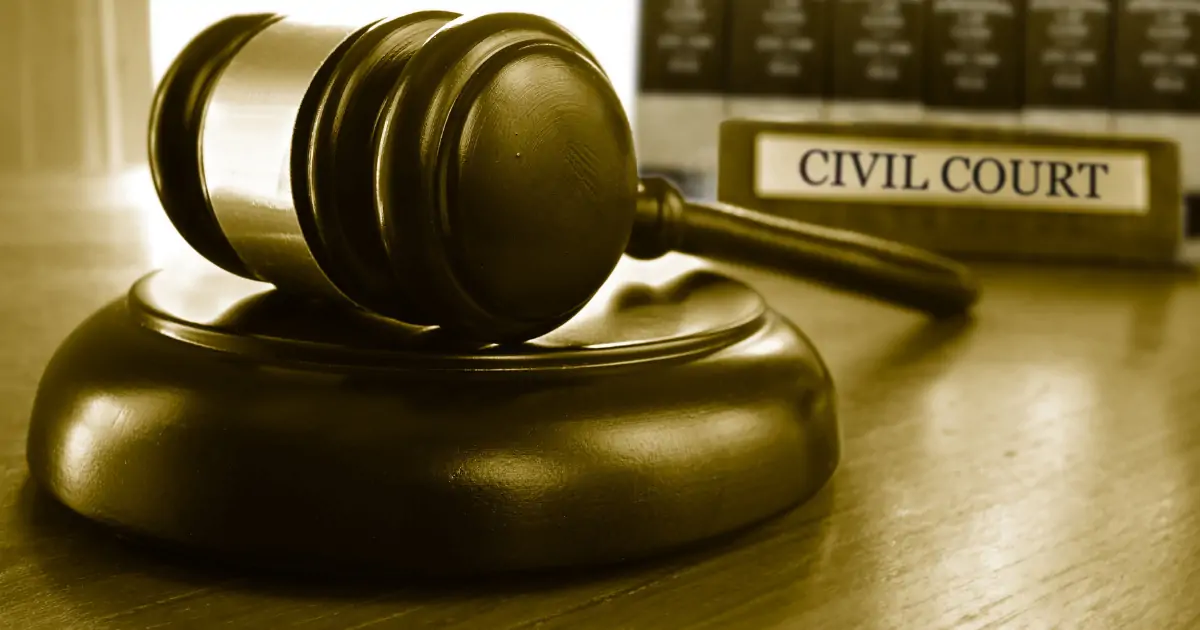Table of Contents
Introduction
Understanding the hierarchy of civil courts is essential when navigating the legal system. The Indian Judicial System is one of the oldest legal systems in the world which has been inherited from the British after more than 200 years of their Colonial rule. The framework of the current legal system is like an impenetrable maze, which has been laid down by the Indian Constitution and derives its powers from it.
There are various levels of judiciary in India classified into different types of courts, each with varying powers depending on the tier and jurisdiction bestowed upon them. They form a hierarchy of importance, in line with the order of courts in which they sit, with the Supreme Court of India at the top, followed by High Courts of respective states with District Judges sitting in District Courts and Magistrates of Second Class and Civil Judge (Junior Division) at the bottom.
In this article, we will discuss and simplify the structure of Civil Courts for you, providing a clear and concise guide to navigating the legal system with ease.
Jurisdiction Of Civil Courts In India
Civil Court has been categorized on the basis of Jurisdiction. Jurisdiction are of many types in Civil Law:
- Subject Matter Jurisdiction: It can be defined as the Authority vested in the court to try and hear cases of the particular type and pertaining to a particular subject matter. For example- Family matters can only be dealt with by the Family Courts and not by NCLT that specifically deals with company matters only.
- Territorial Jurisdiction: The court has the power to exercise its power and authority within the geographical limits which cannot be extended beyond that territorial and geographical limits. Such limits are decided by the respective High Courts in connection with the State Government.
- Pecuniary Jurisdiction: Pecuniary Jurisdiction is related to money. Every court has its own pecuniary limit. Whether a court can try cases and suits of monetary value/amount of the case or suit in question.
- Appellate Jurisdiction: It refers to the authority of a court to rehear or review a case that has already been decided by a lower court. Appellate jurisdiction is generally vested in higher courts. In India, both the High Courts and the Supreme Court have appellate jurisdiction to hear matters which are brought in the form of appeal before them. They can either overrule the judgment of the lower court or uphold it.
Hierarchy Of Civil Courts
Section 3 of the Civil Procedure Code, provides “The District Court is subordinate to the High Court and every Civil Court of a grade inferior to that of a District Court and every Court of Small Causes is subordinate to the High Court and District Court”.
Subordination of courts as specified in this section is only for the purposes of the Civil Procedure Code but not for the purpose of a special Act. In the case of State of Andhra Pradesh v. Sarma Rao, AIR 2007 SC 137, it was held that ‘Land Acquisition is a special statute. The Court of Land Acquisition Judge is subordinate to the High Court but not to the principal Civil Court.’
Supreme Court
At the top of the hierarchy in India is the Supreme Court. It is the highest court of appeal and is vested with various powers, to exercise original, appellate and advisory jurisdiction. In respect to civil matters, the supreme court has been conferred with many power:
- Article 129 gives power to the Supreme Court to punish for contempt of Court.
- Article 133 of the Indian Constitution provides that cases of civil nature shall lie in the Supreme Court if the high court is satisfied with the following conditions and certifies that:
- The matter involves a substantial question of law.
- If the high court thinks that this case needs to be decided by the Supreme Court.
- Article 136 gives the Supreme Court the power to grant a special leave petition to the final judgment given by any lower courts in civil matters.
- Article 145 confers the Supreme Court with the power to make rules for carrying out its practice and procedure in civil matters.
- The Supreme Court has been conferred with power to direct transfer of any civil or criminal case from one State High Court to another State High Court or from a Court subordinate to another State High Court
- Under Art 141 of the Constitution, all courts in India are bound to follow the decision of the Supreme Court as the rule of law.
High Courts
The High Court stands at the head of a State’s judicial administration. Every High Court comprises a Chief Justice and such other Judges as the President may, from time to time, appoint. The Chief Justice of a High Court is appointed by the President in consultation with the Chief Justice of India and Governor of the State. The judges of the High Court hold office until the age of 62 years and are removable in the same manner as a Judge of the Supreme Court.
The High courts has various power to deal with the civil matters:
- Section 122 Of CPC states that High Courts have the power to make, alter and annul rules regulating their own procedure and the procedure of other civil courts with the help of the respective State governments.
- Section 113 Of CPC provides any civil Court to state a case and refer the same for the opinion of the High Court, subject to such conditions and limitations. The High Court has the power to accept the case of Reference.
- The High Courts also have the Appellate power to try those cases wherein the party is not satisfied with the Judgment or decree passed by the lower courts. However, appeal is not a legal right, if the conditions for appeal are not satisfied the High Court can reject such an appeal.
- Under Section 115 of CPC, the High Court has the power of Review. It may call for the record of any case which has been decided by any court subordinate and in which no appeal lies. If such subordinate court appears—
- To have exercised a jurisdiction not vested in it by law.
- To have failed to exercise a jurisdiction so vested.
- To have acted in the exercise of its jurisdiction illegally or with material irregularity.
The High Court may make such an order in the case as it thinks fit.
District Court & Additional District Judges
The District Court is a principal court of original Civil jurisdiction in the District. There is no limit to its pecuniary jurisdiction. District Court is the
highest Civil Court in a District. Suit under Section 92 Of C.P.C, suit under Religious Endowment Act, suit under Patent and Copyrights Act, Matrimonial and divorce cases, Suit under Minority and Guardianship Act, Suit under Guardianship and Wards Act, probate cases, insolvency cases are exclusively triable by the Court of District Judge.
When the cases pending before any District Judge require the aid of Additional Judges for its speedy disposal, the State Government may appoint such Additional Judges as required. They shall exercise the same powers as the District Judge and enjoy unlimited pecuniary jurisdiction.
Functions Of District Judge
- The District Court hears criminal cases, domestic related cases and civil cases.
- The District judge in case of criminal cases has the power to give any punishment including capital punishment.
- The Chief Judicial Magistrate can deal with the cases which are punishable with imprisonment for a term up to 7 years.
- District Judge exercises the powers of appellate court and hears the appeals against the judgment & decree passed by the Civil Judge Senior & Junior Division both.
- The district Judge has the power to appoint the class III and IV employees, transfer and promotion of the employees.
- He has the power to inspect the court & offices functioning in the district. He inspects the jail inspection along with D.M. & Supdt. of police in each quarter and to hold the monthly meeting of judicial officers and meeting of monitoring cells.
Subordinate Courts
Subordinate Courts are also known as Lower Courts. The pecuniary jurisdiction of these courts is very limited. They hear and decide cases related to civil and criminal matters within their jurisdiction. Subordinate Judges are responsible for interpreting and applying the relevant laws and legal precedents to make fair and just decisions in cases before them.
There are 2 classes of Subordinate Courts headed by Judicial Magistrate Class I and Judicial Magistrate Class II. These magistrates play a crucial role in ensuring the efficient functioning of the judicial system by addressing less serious cases and helping to relieve the caseload of higher courts.
Small Causes Courts
Section 7 and 8 of CPC, 1908 deals with Small Causes Courts. These Courts are purely a creation of Britishers. These are civil courts per se and deal with those civil matters which are trivial in nature. Their pecuniary jurisdiction is very small. The need of Small Causes Courts in the present day is to separate those civil matters which are petty or with very small pecuniary jurisdiction from others to ensure speedy disposal of cases.
Small Causes Courts can be classified into:
- Metropolitan Small Causes Courts: They are specialized lower courts that exist in some metropolitan areas, particularly in India. These courts are located in cities having a population of 10 lakhs or more. The presiding officers of such courts shall be appointed by the High Court.
- Munsif Court: It is the court of the lowest order handling matters pertaining to civil matters in the district, a legal system followed in the Indian subcontinent. The State Government notifies the pecuniary limits for the District Munsiff Courts. It is under the charge of a magistrate or judicial collector.
The appeal against these courts lies before the Subordinate Courts which are one rank superior to the District Munsiff Courts but are inferior to the District court
Conclusion
This article unravels the structure of the civil court system in India in a particular order. It is evident that the judicial system of India rests upon the shoulders of the Supreme Court, which acts as a watchdog over other Subordinate courts. From the trial courts, where cases are initially heard, to the appellate courts that review decisions, all the way up to the State Supreme Courts and the Federal Courts that have the final say, each level plays a vital role in ensuring justice is served.
Knowledge is power and with this article we hope to empower you with the knowledge needed to navigate the legal landscape with confidence
References
- Code Of Civil Procedure By Ray Sukumar



